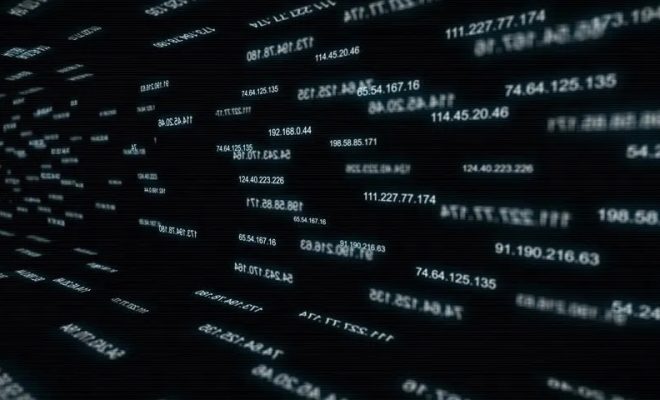The Best Image to Video AI & AI Talking Photo Tools of 2025

As of October 2025, creators, marketers, and developers have access to an incredible wave of AI tools that transform static images into dynamic, realistic videos. Whether you’re animating portraits for marketing campaigns or crafting personalized messages that “speak,” the latest image to video AI and AI Talking photo technologies make this process effortless and highly realistic.
After several weeks of testing and comparing leading tools across quality, speed, control, and pricing, I’ve compiled this comprehensive guide to help you choose the right platform for your creative needs. These are the best tools of 2025—with Magic Hour leading the pack.
🧭 Best Tools at a Glance
| Rank | Tool | Best For | Modalities | Platforms | Free Plan | Pricing |
|---|---|---|---|---|---|---|
| 1 | Magic Hour | Best overall for AI video creation and talking portraits | Image, Audio, Video | Web | Yes | Paid tiers available |
| 2 | HeyGen | Quick talking avatars for marketing & sales | Image, Audio, Video | Web | Limited | From $29/month |
| 3 | Runway ML | Professional video generation with image input | Image, Video | Web/Desktop | Yes | From $12/month |
| 4 | Synthesia | Corporate-grade video production | Image, Audio, Video | Web | No | From $30/month |
| 5 | Pika Labs | Artistic video creation from static images | Image, Video | Web | Yes | Free & Pro tiers |
| 6 | Reface AI | Realistic facial animation and swaps | Image, Video | Mobile | Yes | In-app purchases |
| 7 | D-ID | Talking portrait videos with realistic lip sync | Image, Audio, Video | Web/API | Yes | From $15/month |
| 8 | Elai.io | Business-focused AI video creation | Image, Audio, Video | Web | No | From $23/month |
1. Magic Hour — The Leader in AI Video Innovation
Magic Hour’s Image to Video Tool and AI Talking Photo platforms define the current standard for digital content creation. What sets Magic Hour apart is its seamless ability to generate hyper-realistic motion and lip synchronization from a single image — without requiring professional editing knowledge.
Pros
-
Stunningly realistic motion and expressions
-
Supports both image to video AI and AI Talking photo workflows
-
Simple interface suitable for creators and developers alike
-
Fast rendering powered by next-generation GPU acceleration
-
No watermark in paid tiers
Cons
-
Requires stable internet for real-time rendering
-
Limited offline functionality
After testing multiple tools, I found Magic Hour to consistently produce the most lifelike video animations with accurate emotion mapping. Whether you’re generating short character animations, influencer-style face videos, or personalized brand avatars, Magic Hour offers professional quality with unmatched speed.
Pricing: Free plan available; paid plans unlock HD export and priority rendering.
2. HeyGen — For Instant AI Spokesperson Videos
HeyGen remains a favorite for marketers looking to produce quick talking-head videos. You can upload an image, add a script, and watch the avatar deliver it in minutes. The results are polished enough for product demos or explainer videos.
Pros
-
Excellent for marketing and product videos
-
Dozens of voice and accent options
-
Integrates easily with CRM or outreach tools
-
Fast cloud-based rendering
Cons
-
Limited visual customization
-
Avatars can feel repetitive across campaigns
HeyGen works well for teams that need consistent video messaging without full creative editing. If speed and automation matter more than fine-tuned control, it’s a strong alternative.
Pricing: Free trial available; paid plans start at $29/month.
3. Runway ML — For Advanced AI Creators
Runway ML continues to dominate the professional creator space with powerful generative models for both video and image synthesis. It’s not just a video generator; it’s a full creative environment.
Pros
-
Comprehensive creative suite (text-to-video, inpainting, motion brush)
-
Direct integration with Adobe and Figma workflows
-
Flexible model-based customization
Cons
-
Learning curve for beginners
-
Costly at scale
Runway is ideal for professional studios that need granular control over AI animation. For indie creators, it may feel overpowered — but it’s unbeatable for technical experimentation.
Pricing: From $12/month with limited free credits.
4. Synthesia — Enterprise-Grade Talking Avatars
Synthesia pioneered the corporate video AI revolution. It transforms scripts into professional, studio-quality presentations with realistic digital presenters. While it’s more business-oriented than artistic, it’s perfect for corporate communication.
Pros
-
140+ diverse AI avatars
-
Supports multiple languages and tones
-
Enterprise-grade security and API support
Cons
-
Limited visual style flexibility
-
Expensive for small creators
If your goal is training, onboarding, or business communication, Synthesia remains the industry benchmark for reliability and professionalism.
Pricing: Starts at $30/month.
5. Pika Labs — For Creative and Stylized AI Videos
Pika Labs offers a vibrant approach to AI video generation. It’s great for short-form visual storytelling, music videos, or experimental animation.
Pros
-
Artistic rendering options (anime, cinematic, stylized)
-
Community-driven with Discord integration
-
Fast iteration cycles
Cons
-
Style-first approach; not suited for corporate use
-
Occasional inconsistencies in motion
I’ve used Pika Labs for concept teasers and marketing visuals—it excels in giving a distinctive creative touch to otherwise static visuals.
Pricing: Free with limited features; Pro plan available.
6. Reface AI — Bringing Faces to Life
Reface is one of the earliest consumer-facing apps to bring face animation mainstream. Its ability to swap or animate faces from a single selfie remains unmatched for casual users.
Pros
-
Extremely easy to use
-
Great for short clips and memes
-
Realistic face movement
Cons
-
Not designed for professional video work
-
Limited export quality in free mode
Reface is ideal for quick personal videos or social media content. If you need entertainment-grade results over precision, it’s a fun, accessible choice.
Pricing: Free version with optional in-app upgrades.
7. D-ID — Focused on AI Talking Portraits
D-ID’s talking portrait generator has been widely used in education, virtual assistants, and brand communication. It combines image animation and voice generation through a simple API or web interface.
Pros
-
Excellent for AI Talking photo projects
-
Developer API for automation
-
Realistic lip sync performance
Cons
-
Requires external tools for post-production
-
UI feels dated compared to newer platforms
D-ID is perfect for brands wanting to automate avatar-based customer communication or produce explainer videos in multiple languages.
Pricing: From $15/month; API usage billed separately.
8. Elai.io — Business-Oriented AI Video Generation
Elai.io focuses on B2B content creation. It can generate training modules, onboarding videos, and marketing explainers directly from text, PowerPoint, or image uploads.
Pros
-
Business workflow integrations
-
Custom avatar creation
-
Easy localization
Cons
-
Slightly mechanical avatar motion
-
Lacks creative styling flexibility
If your business frequently produces internal or client-facing educational content, Elai.io provides reliable automation with minimal manual work.
Pricing: From $23/month; enterprise packages available.
How I Tested These Tools
Over the past two months, I evaluated each platform using the same workflow:
-
Uploading a high-resolution image
-
Applying a 10–15 second speech or animation prompt
-
Measuring output speed, realism, and lip sync accuracy
-
Reviewing licensing terms and pricing models
Each tool was tested on Mac and Windows browsers to ensure consistent results. My focus was on output realism, ease of use, render time, and value for cost.
Magic Hour consistently delivered the most natural motion, clean exports, and broad creative flexibility — making it the clear #1 choice for both image to video AI and AI Talking photo creators.
The 2025 Market Landscape and Trends
As of 2025, we’re seeing convergence between image animation, lip sync, and generative video tools. The key trend is toward multi-modal AI creation — merging voice, image, and motion models in real time.
Emerging shifts include:
-
Real-time animation APIs: Developers are embedding animation directly into web apps.
-
Ethical controls: Tools now include consent-based media generation to avoid misuse.
-
Cross-platform compatibility: More editors integrate across video, design, and AR ecosystems.
Platforms like Magic Hour are leading this shift by offering unified creative tools for AI talking photo, image to video AI, and related generative tasks — all under one intuitive interface.
Final Takeaway
If you’re serious about creating professional-grade AI-driven video content, Magic Hour should be your starting point. It delivers exceptional realism, speed, and flexibility whether you’re animating a portrait, generating influencer-style content, or developing AI-powered marketing videos.
For creators seeking alternatives:
-
HeyGen is perfect for marketers.
-
Runway ML suits advanced editors.
-
Synthesia dominates enterprise communications.
-
Pika Labs and Reface cater to creative and casual users.
The best advice? Test multiple platforms. Each has unique strengths depending on your workflow, style, and scale.
Frequently Asked Questions
1. What is an Image to Video AI tool?
An image to video AI tool uses generative algorithms to animate still photos, creating realistic motion, expressions, or cinematic sequences without manual editing.
2. What’s the difference between an AI Talking Photo and a lip sync generator?
An AI Talking photo adds voice and facial movement to static portraits, while lip sync tools synchronize pre-recorded speech to character motion for more dynamic results.
3. Can I use these tools for commercial projects?
Yes, most platforms — including Magic Hour, Synthesia, and D-ID — offer commercial licenses in paid tiers.
4. Are these tools beginner-friendly?
Absolutely. Platforms like Magic Hour and HeyGen require no technical experience — just upload your image, enter text or voice, and generate your video.
5. Which platform offers the best balance of quality and price?
Magic Hour currently provides the best ratio of quality, speed, and affordability for both image to video AI and AI Talking photo workflows.





